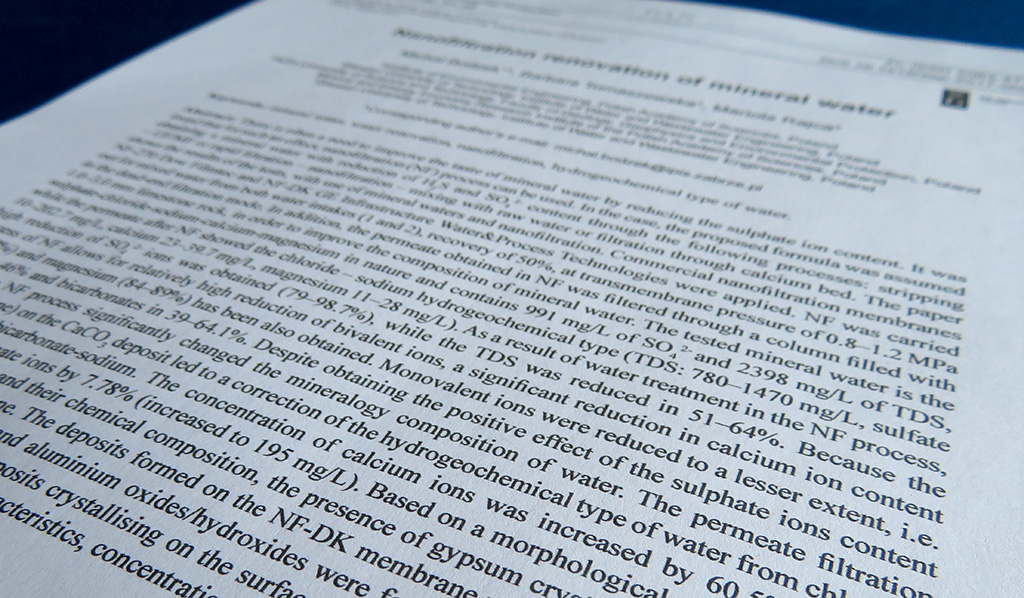Breaking free from the ‘academic’ writing mindset: A guide for the scientist-turned-copywriter

As scientists, we’re all good at writing, aren’t we? Then why do so many science-focused companies struggle to get their message across effectively? The answer – and the path to better copy – lies in understanding the fundamental difference between academic writing and B2B copywriting, and learning how to change the way we approach a writing project.
The paradox of science writing
As a copywriter, I get to look at quite a bit of science-focused B2B copywriting. Some of it is effective at conveying a message about the product or service being sold… but much of it isn’t. And the more I see, the more I’ve become more interested in why a piece of text fails to work well.
You might think it’s down to spelling, grammar, punctuation, idiom, or sentence construction. True, all these aspects have a role to play in making the text easy to understand. But quite often, there are more fundamental problems, such as irrelevant content, poor structure, and lack of focus. These are less easy to diagnose, and are often impossible to resolve with a simple edit.
But science-focused companies abound with talented researchers with plenty of experience of writing about their research. So, when it comes to selling their products or services, why do so many of them struggle with these fundamental aspects of getting a sales message across?
‘Academic’ writing as the default option
I think the main reason that scientists have difficulty communicating in a commercial setting is their educational background (and I write from personal experience!).
For those attracted by science, engineering and maths at school, the main appeal lies in the problem-solving and experimental processes, rather than how to craft a concise, compelling write-up. In these subjects, if any writing is needed, it takes the form of a few short, formulaic paragraphs covering the aims, results and conclusions (usually in that order). For this reason, it’s rare to find a scientist who’s well-practised in the art of essay-writing.
And then later, at universities, the academic paper is held up as the ‘gold standard’ of science communication. Here, comprehensiveness, impartiality and adherence to convention often have the upper hand on conciseness and clarity, and adding emotion or inspiring action are definitely off the menu. As a result, less emphasis is given on how to write for a broader audience, with some channels – such as journalism and sales collateral – often being viewed as inherently compromising scientific accuracy or neutrality.

These ideas about science writing remain with us when we move from academia into business. In particular, the ‘academic’ writing mindset becomes the default option for any form of communication. Of course, when writing about a new product we will incorporate sales points, use bullet-point lists of features, or come up with an attention-grabbing headline, but these tactics will be rendered largely ineffective because we approached the task in the wrong way.
Transferring information versus inspiring action
Why does the approach to writing matter?
Having made the transition from being a ‘scientist who likes writing’ to being a ‘writer who likes science’, I’ve learnt the hard way that academic writing and commercial copywriting are completely different disciplines. It can be summarised like this:
- The purpose of academic writing is information transfer. The challenge is: “How can we structure this text so we tell the reader everything they might need to know about our work, in a logical way?”
- The purpose of B2B copywriting is to inspire understanding, trust and action. The challenge now is: “How can we structure this text so that the reader can see that we understand their problems, is convinced that our product offers a solution, and is ultimately compelled to buy it?”.
As you can see, these two forms of writing require not just a different structure, but a different mindset too. But in order to write anything, you first need to understand the subject matter. This means that in research-led businesses the task of copywriting is often given to staff with an academic background, and the writing is therefore usually approached with an ‘academic’ mindset.

How to break free from the academic writing mindset
So if you too are a former researcher now tasked with writing about your company’s innovations, where should you start in your journey to become a better writer of commercial copy?
Yes, you’ll need to be ‘good with words’, as well as creative, adaptable, and prepared to spend a good deal of time learning the tricks of the trade (which, I should add, is a process that you never complete!).
Good copywriting makes your customers see how your company’s products could address their problems – it’s not just about telling them something that you think they should know.
But before any of that, you’ll need to take a long, hard look at what you’ve learnt about writing in your career, and be prepared to – cautiously at first – free yourself from the constraints of academic writing.
This is likely to involve:
- Thinking about your target audience, what they do every day, and what problems they have.
- Then writing something that shows how your company’s products can address those problems – not simply writing something that your company thinks the customer should know.
- Learning how to identify features, advantages and benefits, and how to combine them with evidence to build an argument.
- Pushing back on some of the lifeless, opaque jargon commonly used in your business sector (including many of those abbreviations).
- Learning how to break free from the dispassionate ‘academic’ style of writing, and use text structure, persuasion tactics and emotion to ensure your copy gets read and is acted on.
- Convincing your colleagues that doing all of these things – and more – will make the copy better, and so increase sales.
The last one is perhaps the hardest of all. But some companies are breaking the mould. And as you’ll find when you try, it’s not only liberating to write about science in a way that’s free from some of the conventions of academia, but it gets results too!
